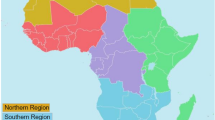Abstract
Due to sudden evolution and spread of COVID-19, the entire community in the globe is at risk. The covid has affected the health and economy and caused loss of life. In India, due to social economic factors, several thousands of people are infected, and India is seen as one of the top countries seriously impacted by the pandemic. Despite of having a modern medical instruments, drugs, and technical technology, it is very difficult to contain the spread of virus and save people from risk. Healthcare system and government personnel need to get an insight of covid outbreaks in the near future to decide on step** up the healthcare facilities, to take necessary actions and to implement prevention policies to minimize the spread. In order to help the government, this study aims to build model a forecast COVID-19 model to foretell growth curve by predicting number of confirmed cases. Three variant models based on long short-term memory (LSTM) were built on the Indian COVID-19 dataset and are compared using the root mean squared error (RMSE) and mean absolute percentage error (MAPE). The findings have revealed that the proposed stacked LSTM model outperforms the other proposed LSTM variants and is suitable for forecasting COVID-19 progress in India.
Access this chapter
Tax calculation will be finalised at checkout
Purchases are for personal use only
Similar content being viewed by others
References
R. Magar, P. Yadav, A. Barati Farimani, Potential neutralizing antibodies discovered for novel corona virus using machine learning. Sci. Rep. 11, 5261 (2021). https://doi.org/10.1038/s41598-021-84637-4
N. Zhu, D. Zhang, W. Wang, A novel coronavirus from patients with pneumonia in china, 2019, 9.22.21, NEJM, 2020 [WWW Document]. URL https://www.nejm.org/doi/full/10.1056/nejmoa2001017
M. Toğaçar, B. Ergen, Z. Cömert, COVID-19 detection using deep learning models to exploit social mimic optimization and structured chest X-ray images using fuzzy color and stacking approaches. Comput. Biol. Med. 121, 103805 (2020). https://doi.org/10.1016/j.compbiomed.2020.103805
B. Mullick, R. Magar, A. Jhunjhunwala, A. Barati Farimani, Understanding mutation hotspots for the SARS-CoV-2 spike protein using Shannon entropy and K-means clustering. Comput. Biol. Med. 138, 104915 (2021). https://doi.org/10.1016/j.compbiomed.2021.104915
K. Arun Kumar et al., Forecasting the dynamics of cumulative covid-19 cases (confirmed, recovered and deaths) for top-16 countries using statistical machine learning models: Auto-regressive integrated moving average (arima) and seasonal auto-regressive integrated moving average (sarima). Appl. Soft Comput. 103, 107161 (2021)
T.T. da Silva, R. Francisquini, M.C.V. Nascimento, Meteorological and human mobility data on predicting COVID-19 cases by a novel hybrid decomposition method with anomaly detection analysis: a case study in the capitals of Brazil. Expert Syst. Appl. 182, 115190 (2021). https://doi.org/10.1016/j.eswa.2021.115190
A. Swaraj, K. Verma, A. Kaur, G. Singh, A. Kumar, L. Melo de Sales, Implementation of stacking based ARIMA model for prediction of Covid-19 cases in India. J. Biomed. Inf. 121, 103887 (2021). https://doi.org/10.1016/j.jbi.2021.103887
P. Wadhwa, Aishwarya, A. Tripathi, P. Singh, M. Diwakar, N. Kumar, Predicting the time period of extension of lockdown due to increase in rate of COVID-19 cases in India using machine learning. Mater. Today Proc.., International Conference on Newer Trends and Innovation in Mechanical Engineering: Materials Science 37, 2617–2622 (2021). https://doi.org/10.1016/j.matpr.2020.08.509
P. Wang, X. Zheng, G. Ai, D. Liu, B. Zhu, Time series prediction for the epidemic trends of COVID-19 using the improved LSTM deep learning method: case studies in Russia, Peru and Iran. Chaos Solit. Fractals 140, 110214 (2020). https://doi.org/10.1016/j.chaos.2020.110214
B.I. Nasution, Y. Nugraha, J.I. Kanggrawan, A.L. Suherman, Forecasting of covid-19 cases in Jakarta using Poisson autoregression, in 2021 9th International Conference on Information and Communication Technology (ICoICT), (IEEE, Piscataway, 2021), pp. 594–599
C.-S. Yu et al., A covid-19 pandemic artificial intelligence-based system with deep learning forecasting and automatic statistical data acquisition: development and implementation study. J. Med. Internet Res. 23, e27806 (2021)
H. Khaloofi, J. Hussain, Z. Azhar, H.F. Ahmad, Performance evaluation of machine learning approaches for covid-19 forecasting by infectious disease modeling, in 2021 International Conference of Women in Data Science at Taif University (WiDSTaif), (2021), pp. 1–6. https://doi.org/10.1109/WiDSTaif52235.2021.9430192
J.S. Armstrong, Long-Range Forecasting (Wiley, New York, etc, 1985)
Y. Bengio, Y. LeCun, Scaling learning algorithms towards AI. Largescale Kernel Mach. 34(5), 1–41 (2007)
I.H. Witten et al., Data Mining: Practical Machine Learning Tools and Techniques, 4th edn. (Morgan Kaufmann, Burlington, 2016) https://www.amazon.com/exec/obidos/ASIN/0128042915/departmofcompute. Accessed on 30 Nov 2018
S. Hochreiter, J. Schmidhuber, Long short-term memory. Neural Comput. 9(8), 1735–1780 (1997). https://doi.org/10.1162/neco.1997.9.8.1735
A. Sherstinsky, Fundamentals of recurrent neural network (RNN) and long short-term memory (LSTM) network. Phys D (2020). https://doi.org/10.1016/j.physd.2019.132306
K. Singh, S. Shastri, A.S. Bhadwal, P. Kour, et al., Implementation of exponential smoothing for forecasting time series data. Int. J. Sci. Res. Comput. Sci. Appl. Manage. Stud. (2019) issn: 2319-1953
Z. Zhao, K. Nehil-Puleoa, Y. Zhao, How well can we forecast the COVID-19 pandemic with curve fitting and recurrent neural networks? medRxiv preprint 2020. https://doi.org/10.1101/2020.05.14.20102541
S. Shastri, A. Sharma, V. Mansotra, A model for forecasting tourists arrival in J & K. India. Int. J. Comput. Appl. 129(15), 32–36 (2015) issn: 0975-8887
M. Fakhfakh, B. Bouaziz, F. Gargouri, L. Chaari, ProgNet: Covid-19 prognosis using recurrent and convolutional neural networks. medRxiv preprint 2020. https://doi.org/10.1101/2020.05.06.20092874
Y. Yu, S. **, C. Hu, J. Zhang, A review of recurrent neural networks: LSTM cells and network architectures. Neural Comput. 31, 1235–1270 (2019). https://doi.org/10.1162/neco_a_01199
Author information
Authors and Affiliations
Corresponding author
Editor information
Editors and Affiliations
Rights and permissions
Copyright information
© 2023 The Author(s), under exclusive license to Springer Nature Switzerland AG
About this chapter
Cite this chapter
Vanitha, V., Kumaran, P. (2023). COVID-19 Growth Curve Forecasting for India Using Deep Learning Techniques. In: Kanagachidambaresan, G.R., Bhatia, D., Kumar, D., Mishra, A. (eds) System Design for Epidemics Using Machine Learning and Deep Learning. Signals and Communication Technology. Springer, Cham. https://doi.org/10.1007/978-3-031-19752-9_18
Download citation
DOI: https://doi.org/10.1007/978-3-031-19752-9_18
Published:
Publisher Name: Springer, Cham
Print ISBN: 978-3-031-19751-2
Online ISBN: 978-3-031-19752-9
eBook Packages: EngineeringEngineering (R0)




